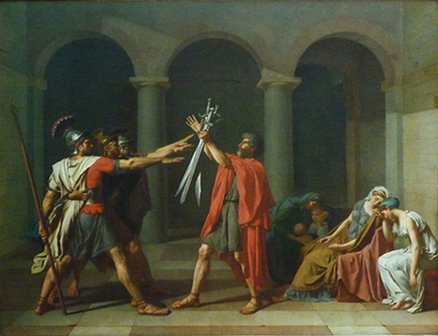February is African American History Month. To celebrate we have assembled a selection of sites that feature images related to African American history. Know of other significant collections? Please share in the comments.
The African-American Mosaic
A Library of Congress Resource Guide for the Study of Black History & Culture. "This exhibit marks the publication of The African-American Mosaic: A Library of Congress Resource Guide for the Study of Black History and Culture…" Covers colonization, abolition, migrations, and the WPA.
African-American Odyssey
From the Library of Congress' African-American collections, this online exhibition includes links to Frederick Douglass Papers; Jackie Robinson and Other Baseball Highlights, 1860s-1960s; Born in Slavery: Slave Narratives from the Federal Writers' Project, 1936-1938; From Slavery to Freedom: The African-American Pamphlet Collection, 1822-1909; and Slaves and the Courts, 1740-1860.
African Mosaic: Celebrating a Decade of Collecting
"This exhibition pays tribute to the extraordinary variety of individual
works of art that come into the Smithsonian’s National Museum of African
Art as gifts or purchases. Together, these artworks represent 10 years
of building a permanent collection that embodies the diversity and
outstanding quality of Africa’s arts."
The Atlantic Slave Trade and Slave Life in the Americas: A Visual Record
From the Virginia Foundation for the Humanities and University of Virginia. "The 1,280 images in this collection have been selected from a wide range of sources, most of them dating from the period of slavery. This collection is envisioned as a tool and a resource that can be used by teachers, researchers, students, and the general public - in brief, anyone interested in the experiences of Africans who were enslaved and transported to the Americas and the lives of their descendants in the slave societies of the New World."
Digital Durham
From Duke University. "Digital Durham website offers students, teachers, and researchers a range of primary sources with which they can investigate the economic, social, cultural, and political history of a post-bellum southern community... The new materials on Digital Durham touch on over 600 topics including African American business enterprise, the emergence of textiles, tobacco production and marketing, child labor, prohibition, evangelical revivalism, nineteenth-century medical practices, women's experience of childbirth, and public and private education."
Digital Schomburg Images of African Americans from the 19th Century
From the New York Public Library. "The images selected for presentation in this database are drawn
primarily from 21 discreet collections at the Schomburg Center:
sixteen personal, organizational and photographers' collections, many
of which are complemented by substantial bodies of letters, diaries,
minutes and other textual documents; four collections representing
examples of the various presentation formats common to nineteenth
century portrait and genre photography; and a collection of wood
engravings from the illustrated U.S. press of the nineteenth century"
Images of African-American Slavery and Freedom
From the Collections of the Library of Congress. "This year's theme "African Americans and the Civil War" honors the
efforts of people of African descent to destroy slavery and inaugurate
universal freedom in the United States. The Library of Congress, National Archives and Records Administration,
National Endowment for the Humanities, National Gallery of Art,
National Park Service, Smithsonian Institution and United States
Holocaust Memorial Museum join in paying tribute to the generations of
African Americans who struggled with adversity to achieve full
citizenship in American society."
Jackson Davis Collection of African American Educational Photographs
From the University of Virginia Library. "Jackson Davis, an educational reformer and amateur photographer, took nearly 6,000 photographs of African American schools, teachers and students throughout the Southeastern United States. His photographs -- most intended to demonstrate the wretched conditions of African American schools in the south and to show how they could be improved -- provide a unique view of southern education during the first half of the twentieth century."
Pictures of African Americans During World War II
From the National Archives. These images "illustrate African-American
participation in World War
II. The pictures were selected
from the holdings of the
Still Picture Branch (NNSP)
of the National Archives
and Records Administration.
The majority of the pictures
were chosen from the records
of the Army Signal Corps
in Record Group (RG) 111,
the Department of the Navy
in RG 80, the Coast Guard
in RG 26, the Marine Corps
in RG 127, and the Office
of War Information in RG
208."
Through the Lens of Time: Images of African Americans from the Cook Collection
From Virginia Commonwealth University Libraries. "Digital collection of over 250 images of African Americans dating from the nineteenth and early twentieth century, selected from the George and Huestis Cook Photograph Collection at the Valentine Richmond History Center. The digitally scanned images on this site are of prints from glass plate negatives or film negatives taken by George S. Cook (1819-1902) and Huestes P. Cook (1868-1951), primarily in the Richmond and Central Virginia area. The Cook Collection consists of over 10,000 negatives taken from the 1860s to the 1930s in Virginia and the Carolinas."
Image: Clay, Edward Williams,
America / E.W.C., c1841. From
Images of African-American Slavery and Freedom.













